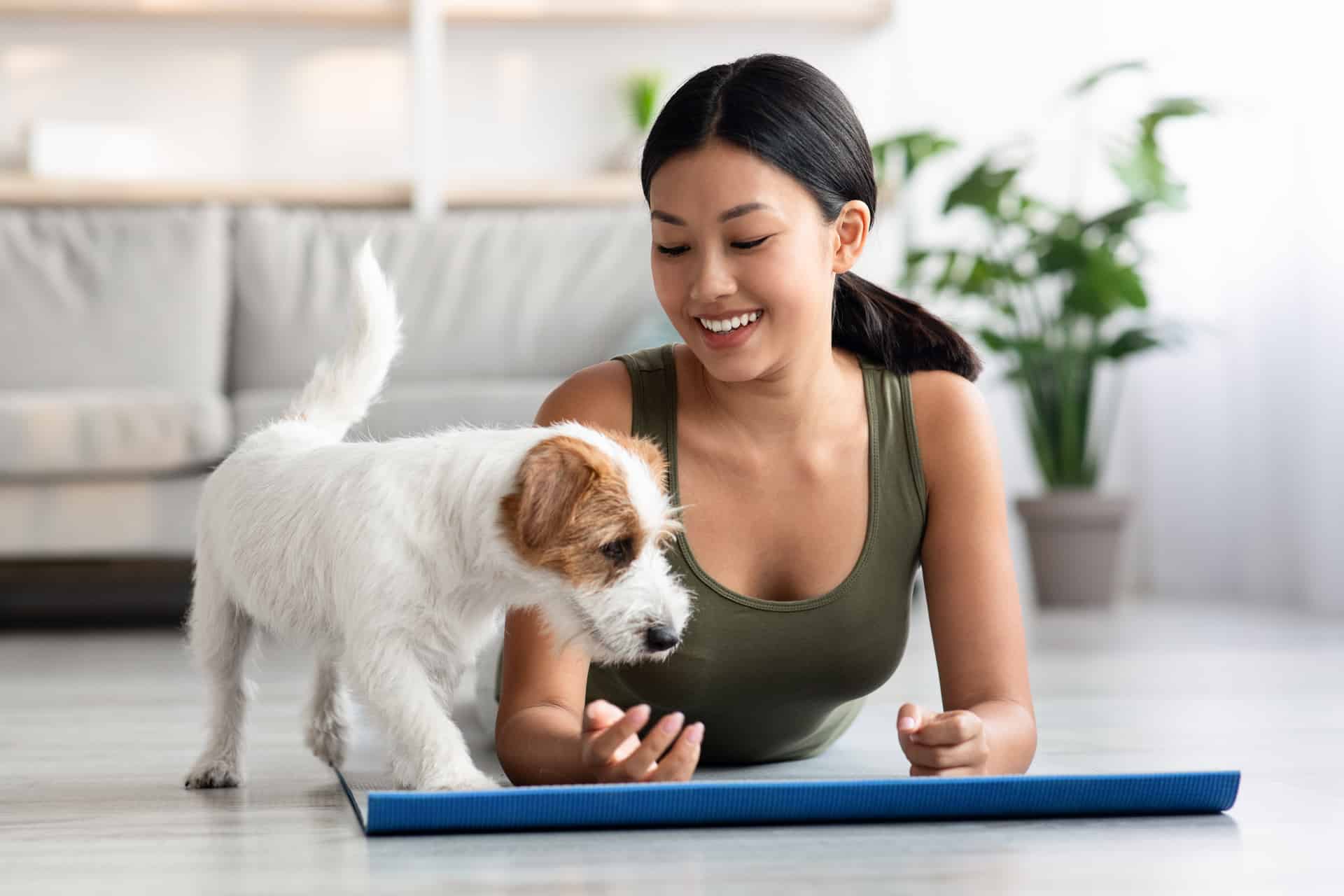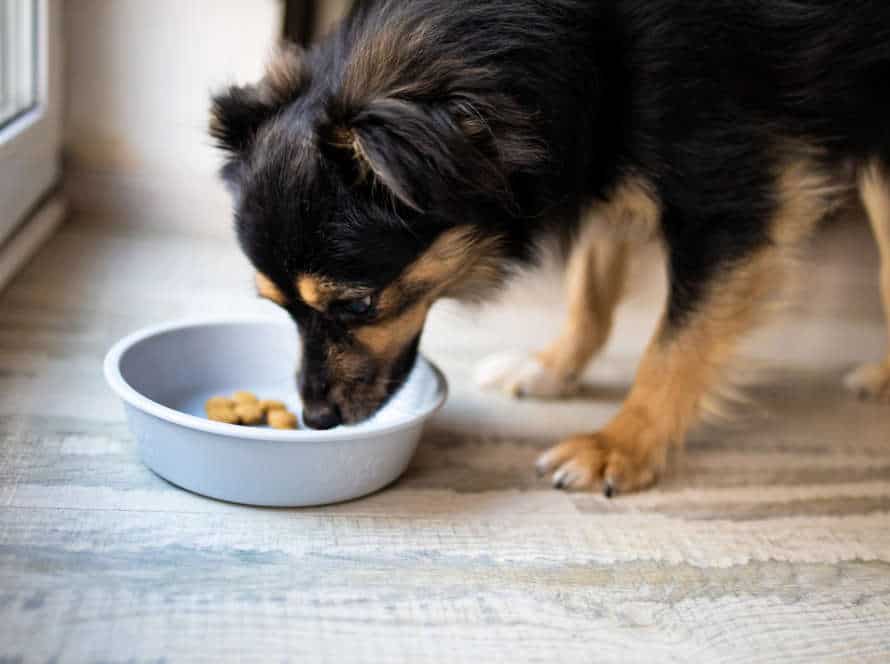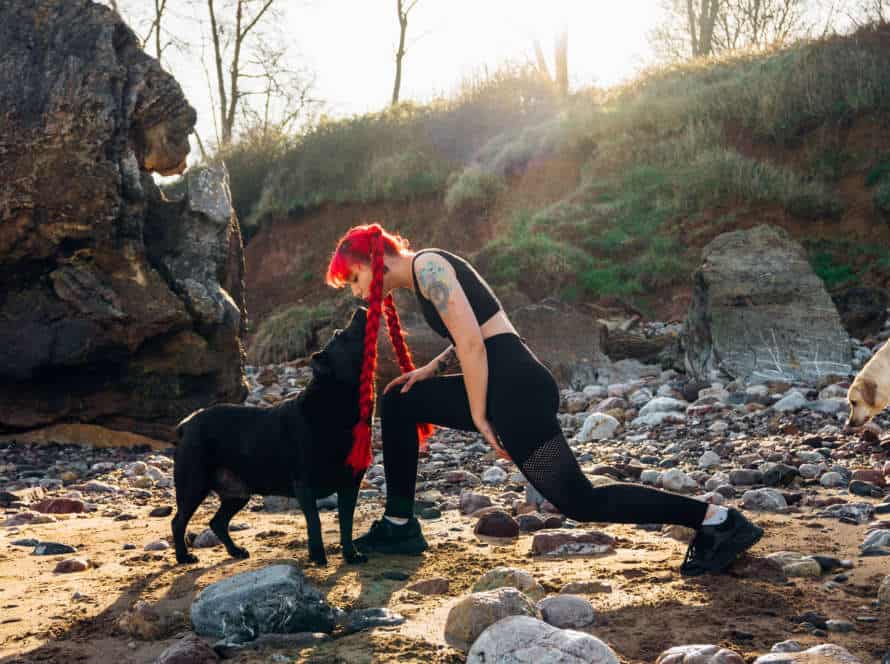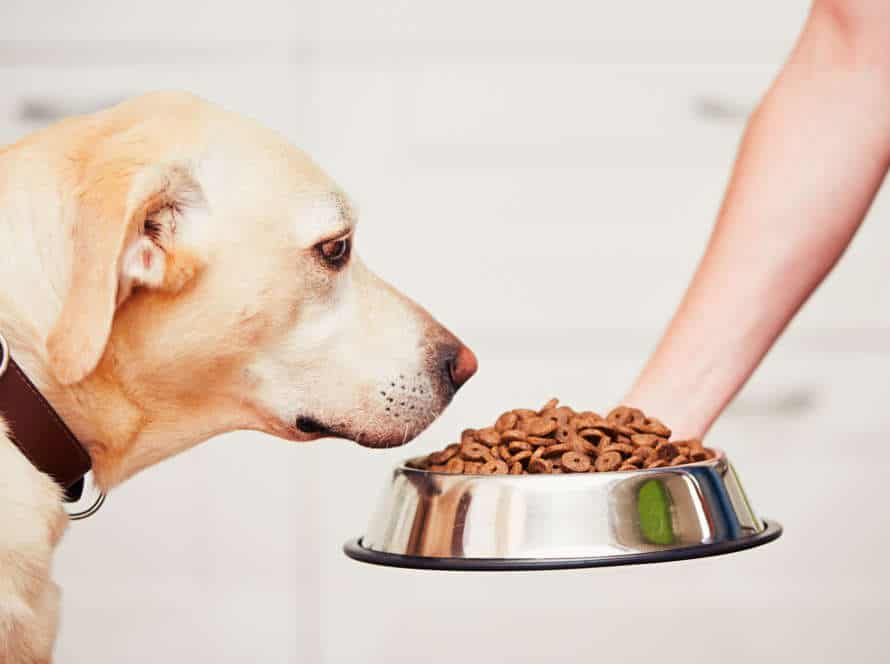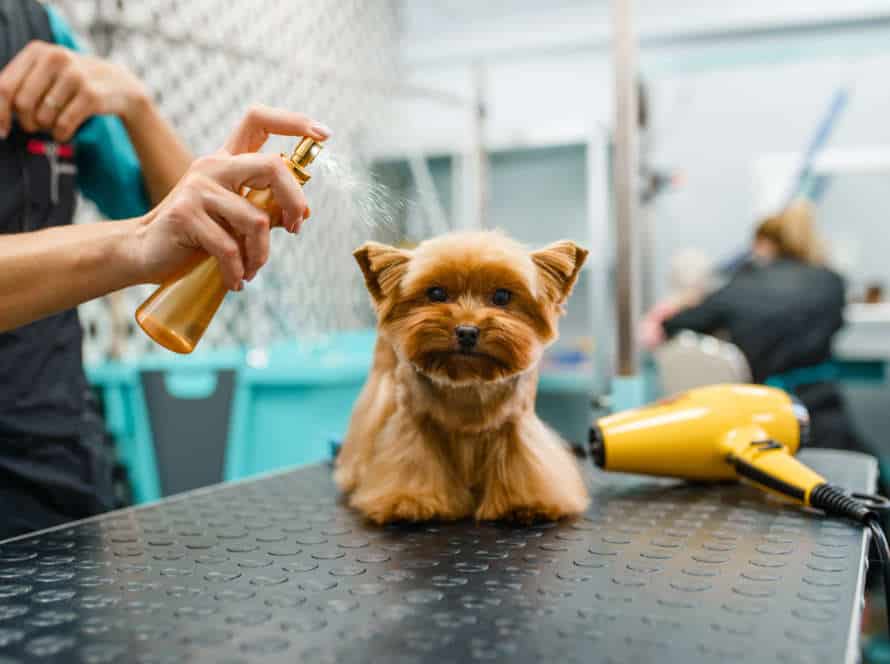The Importance of Exercise for Puppies: Building a Strong Foundation
Exercise is essential for pups! It helps the pup develop physical and mental strength. Here’s why exercise is so important:
- Strengthens bones and muscles. Doing regular exercise helps a pup’s bones and muscles stay strong and avoid injuries.
- Supports healthy growth and development. Exercise can help a pup’s digestion, blood circulation, and weight.
- Improves behavior and social skills. Exercise can help a pup be less aggressive and anxious, as well as let them socialize with other animals and humans.
- Enhances mental stimulation. Physical activities can help a pup’s cognitive abilities and stop boredom and destructive behavior.
As a responsible owner, make sure to give your pup enough exercise and outdoor activities for a happy and healthy life!
Exercise for Puppies: Why it’s Essential
Exercise is crucial for young puppies’ health and wellbeing. They need regular physical activity for muscle development and weight maintenance. This article explains why it’s essential, and what activities will help them live a healthy life. Puppies must grow and build strong foundations!
Benefits of physical exercise for puppies
Physical exercise is a must for puppies! It’s great for their physical, mental, and emotional health. Setting up a regular exercise routine for your pup will help with behaviour problems like chewing, digging, and barking. Plus, it’s an awesome way to bond with your furry friend.
Here are the benefits of physical exercise for puppies:
- Get fit: Exercise helps build strong bones, muscles, and joints.
- Stimulate their minds: Exercise keeps your pup’s mind busy, preventing destructive behaviour.
- Meet new people and dogs: Exercise gives your puppy a chance to socialize and interact, reducing anxiety and improving social skills.
- Sleep better: Exercise helps your pup get rid of extra energy, so they can sleep better.
- Stress relief: Exercise helps decrease stress and anxiety, making them feel good.
In conclusion, exercise is key to your puppy’s development and well-being. Pro tip: Always check with your vet for any exercise restrictions or recommendations for your pup’s breed or health conditions.
The negative consequences of insufficient exercise for puppies
Exercise is key for pup’s health! Not getting enough can lead to obesity, muscle weakness, and even behavioural issues. Pups need at least 30 minutes of moderate exercise per day. Too little exercise can mean joint pain, heart disease, and other health problems.
It also helps with strong bones and muscles, cardiovascular health, and brain function. A lack of exercise can cause restlessness and bad behaviour. As a responsible pet owner, give your pup regular exercise for a happy, healthy life. Go for a walk, play fetch, or do other physical activities.
Pro Tip: Exercise not only keeps pup healthy but also mentally stimulated and happy. So, let’s get out there and have fun with our furry friends!
Exercise requirements for different breeds of puppies
Exercise is essential for your puppy’s overall health. But, different breeds need different amounts of activity. Here’s what to do for each one:
- Small Breeds: Chihuahuas and Yorkies need short walks or indoor playtime.
- Medium Breeds: Cocker Spaniels, Beagles and Bulldogs need daily walks, off-leash time in a fenced area, and playtime indoors.
- Large Breeds: Boxers, Golden Retrievers and German Shepherds need long walks, running and fetch multiple times a day.
- Giant Breeds: Great Danes and Mastiffs need low-impact exercise like walking or swimming.
Make sure you follow your pup’s breed’s requirements so they stay healthy and happy.
Types of Exercises Suitable for Puppies
Exercise is a must for pups! The right exercises are key to strong physical and mental health. Let’s explore the different types of exercises suitable for puppers. These activities will help build a solid foundation.
Fun exercises to engage puppies
Engage your pup in fun activities for a great way to bond with your adorable pet. Stimulate their physical needs, promote their healthy growth and have fun! Here are some exercises that your pup can enjoy:
- Tug-of-War: Play a game of tug-of-war with your puppy using a rope or soft plush toy. This will help them develop their jaw strength and prey drive.
- Fetch: Throw a small toy or ball and watch as your pup retrieves it. This helps them build coordination, agility, and social skills.
- Hide-and-Seek: Hide a treat or toy and let your pup use their sense of smell to search for it. They’ll have a blast while developing their mental agility.
Always monitor your pup, taking age, breed, and physical condition into account. With time and consistency, these exercises will help create a strong foundation for an active, healthy lifestyle.
Safe and effective indoor exercises
Exercise is vital for keeping your pup healthy and content. Here are some safe indoor exercises to keep your pup alert and engaged:
- Tug of War: Use a rope toy or cloth and let your pup pull and play gently.
- Hide and Seek: Hide toys or treats and get your pup to find them. This can help with their scent tracking and provide mental stimulation.
- Stair Climbing: If you have stairs, help your pup navigate them up and down. This exercise can improve balance and coordination.
- Fetch: The classic game is perfect for building endurance and getting your pup moving. Use a soft, lightweight toy that’s safe to catch.
Remember, puppies need different exercise than adult dogs. Don’t over-exercise your pup and talk to your vet if you have questions.
Pro Tip: To get your pup interested in exercise, make it fun! Use treats or praise as positive reinforcement, and play cheerful music.
Outdoor exercises perfect for puppies
Puppies need exercise! It builds strength, improves coordination, and helps with healthy growth. Outdoor exercises are ideal. Here are some perfect ones for puppies:
- Fetch – Toss a ball, toy, or frisbee. Start short, then build up.
- Tug-of-war – Use a rope toy or soft object. Set clear rules.
- Obstacle course – Use cones, ramps, and tunnels. Help your pup’s agility.
- Walking or jogging – Regular walks or short jogs. Start short, then increase length and intensity.
- Swimming – Develops muscular strength and promotes cardiovascular health. Also gentle on joints.
Establishing an Exercise Routine for Your Puppy
It’s key to give your pup an exercise routine. This helps with muscle strength, joint mobility, and a healthy heart. It also keeps their mind active and reduces stress, which can reduce bad behaviour. Exercise is also great for socialising, as it lets puppies meet others in a safe way. So, what kind of routine should you be setting up for your pup?
Setting realistic exercise goals for your puppy
When trying to create an exercise routine for your pup, it’s essential to set achievable goals. This ensures your pup’s physical health and well-being. Here are some tips:
- Consider your pup’s breed, age, size and overall health.
- Start off slow and gradually increase the exercise amount and intensity.
- Pay attention to your pup’s body language and adjust the routine.
- Have a daily schedule with indoor and outdoor activities.
- Remember to be consistent.
By setting realistic goals, you help your pup stay healthy, happy and active!
Creating a structured exercise plan for your puppy
Creating an exercise program for your pup is essential for their growth. A planned plan can help keep them healthy and build strong muscles and bones, as well as improve their attitude and behavior.
Here’s how to make one:
- Start slow: Take short walks and light exercises to avoid straining their growing body.
- Mix it up: Change their exercises – walks, runs, fetch, tug-of-war, and mental stimulation games.
- Be aware: Observe their energy and body language during exercising. Stop if you notice any signs of fatigue, pain, or discomfort.
- Set a schedule: Have a set routine and stick to it. Try to exercise your pup at the same time each day to form a healthy habit.
Remember, regular exercise is essential for their well-being and health. It will lay the basis for a long and healthy life.
How often should you exercise your puppy?
Pups need plenty of activity to stay fit and merry. But how often should you make your fluffy mate exercise? It depends on the breed, age, and energy levels of your puppy.
Generally, pups should work out 5 minutes per month of age, up to two times each day. For example, a 3-month-old pooch should exercise for 15 minutes twice daily.
Here are some tips for when starting an exercise program for your pup:
- Begin slow and increase the intensity and time of the exercise bit by bit.
- Pick activities that suit your pup’s age and breed, such as short strolls, monitored playtime, and watched swimming.
- Take note of your pup’s health and any issues that may affect their workout.
- Keep your pup on a leash or in a secure, fenced area to stop accidents and injuries.
Safety First!
Safety first! When it comes to puppy exercise, make sure you’re not overworking your pup. Think about socialization, mental stimulation, and preventing boredom. It’s essential to start young and create a solid foundation for healthy living.
Preparing your puppy for a workout
Before your pup works out, prep is key to avoid any injuries. Pups have developing bones, muscles and joints that need special care. Here are some tips:
- Start slow—take short walks, then increase duration and intensity over time.
- Do warm-up exercises—fetch, stretching, short walks all help.
- Hydrate—give water before, during and after exercise.
- Monitor—watch for signs of exhaustion like panting, drooling, and lagging.
- Make a workout plan—consult a vet for the pup’s breed, age, and health. This will build strong foundations and keep them healthy.
Signs that your puppy may need to take a break
Be aware for signs that your pup needs a break from exercising. Pushing too much can cause injury or exhaustion. These are the signs to watch out for:
- Heavy panting or breathing difficulties – rest if this happens.
- Limping or lameness – could be due to overexertion or an injury, rest and check with a vet if it continues.
- No interest in playing or exercises, or low on energy – this means they need to rest.
- Excessive thirst – could be due to being overheated or dehydrated. Provide water and rest in a cool area.
Always be vigilant when exercising your pup. By monitoring and giving breaks when needed, you can make sure they are healthy and happy, while also allowing their physical development to grow.
Preventing injuries while exercising your puppy
Exercise is essential for a puppy’s growth. But, take precautions to prevent injuries. Here are tips to help:
- Keep puppy on leash during walks or runs. This stops them from running into traffic.
- Avoid uneven or slippery surfaces. This stops slips and falls.
- Increase exercise gradually. This stops overexertion and muscle strain.
- Give puppy lots of water during and after exercise. This prevents dehydration.
- Monitor your puppy. Look for signs of injury. Limping or favoring a limb. If you see these signs, take them to the vet right away.
Keeping it Fun and Engaging
Exercise is a must for a healthy, blissful pup. It helps them stay fit and also helps them mingle and grow intellectually. But, how do you keep it fun and stimulating? This section will provide tips to make exercise more enjoyable for your pup.
Incorporating toys and games to make exercise more enjoyable
Incorporate toys and games into your pup’s exercise for more fun! Here are some ideas:
- Play Fetch – Great indoors or outdoors. Throw toys like a ball, rope, or frisbee.
- Hide-and-Seek – Hide the pup’s favorite toy, treat, or yourself! Develops their senses.
- Tug-of-War – Grab a rope toy and teach them the ‘drop it’ command.
- Puzzle Toys – Keep pup’s mind busy with problem solving. Get treat dispensers and watch them figure it out.
Make exercise enjoyable and satisfying for all!
Finding a workout buddy for your puppy
Getting a workout buddy for your pup is a super way to keep them entertained while getting fit! Here’s some tips on how to find one:
- Join a local dog park. It’s a perfect setting to introduce your puppy to other dogs and owners. Plus, they can socialize and get their exercise in too!
- Look into dog playgroups or classes. Many trainers offer classes to teach pups new skills and let them exercise together.
- Hire a professional. If you don’t have the time or know how to manage pup-exercise, an experienced dog walker or sitter is the way to go. They’ll play with them, take them for walks and help them burn off energy in a safe and healthy way.
With a workout buddy, your pup will love to exercise and stay active – plus you get help in keeping them fit and healthy!
Winter tips for exercising your puppy safely.
Winter can be tough to keep your pup active. But, with creativity and care, you can keep them healthy and happy. Here’s some tips:
- Play indoors like fetch or tug-of-war, to avoid exposure to harsh winter.
- Try new games indoors like hiding treats or toys.
- Dress your pup in a coat, booties, or sweaters as needed.
- Go for short walks with a coat to increase metabolism and strengthen immunity.
It’s about both physical and emotional health. Bond together and enjoy the winter! Pro tip: Add coconut oil to your pup’s meal – it prevents dry, itchy skin in the winter.
Frequently Asked Questions
Q: Why is exercise important for puppies?
A: Exercise is important for puppies because it helps to build a strong foundation for their physical and mental health. It also helps them to develop strong muscles, bones, and joints.
Q: How much exercise does my puppy need?
A: The amount of exercise your puppy needs will depend on their breed, size, and age. In general, puppies should have at least 30 minutes of exercise each day, but it’s important not to overexert them or put them at risk for injury.
Q: What types of exercise are best for puppies?
A: Low-impact activities such as walking, playing fetch, and swimming are great for puppies. Agility training and obedience classes can also be beneficial for mental stimulation and socialization.
Q: Can I exercise my puppy too much?
A: Yes, it’s important not to overexert your puppy or put them at risk for injury. Make sure to provide plenty of breaks and water during exercise sessions, and never force your puppy to continue if they seem tired or uncomfortable.
Q: How does exercise benefit my puppy’s health?
A: Exercise can improve your puppy’s physical health by strengthening their muscles, bones, and joints, and reducing the risk of obesity and heart disease. It can also improve their mental health by providing mental stimulation and reducing unwanted behaviors like chewing and barking.
Q: Can I exercise my puppy indoors?
A: Yes, there are many indoor activities that are great for puppies, such as playing fetch in a hallway or teaching them to climb stairs. You can also invest in indoor treadmill or agility equipment to provide additional exercise opportunities in bad weather.

